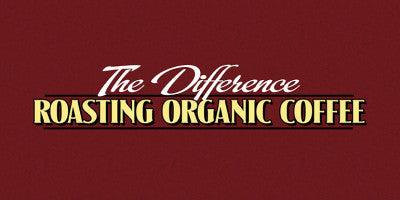
The Difference: Roasting Organic Coffee
The Difference: Roasting Organic Coffee
In my previous post, which you can read here, I made some passing comments regarding some of the challenges that we faced in switching from conventional coffee to organic coffee. I tried not to bore you with details, but based on feedback that we received, more details seem to be in order.
When we develop a profile many factors are considered, from the center cut of the bean to climate, altitude, processing methods, just to name a few. However, two of the most noticeable changes from conventional coffee to organic coffee for us is the size and density of the coffee bean. In most cases, the other factors I referenced above where not really all that different. The conventional coffee and organic coffee we often grown in the same region, same altitude, similar distance from the equator and experienced the same night time temperatures. The coffee beans were also processed and dried the same after harvesting. But the two major differences were size and density.
When you are dealing with heating a cellulose structure, with over 700 flavor compounds, many organic and chlorogenic acids, these differences matter. Coffee roasting is nothing more than time, temperature, and airflow (although we have added a unique 4th variable to the roast).
First off, organic coffee beans do not seem to be screened to as precise uniform size as conventional coffee. For example, a conventional bag of Colombia Supremo coffee beans are screened to 17 and 18 1/64th of an inch within a 5% tolerance. Some Colombia organic coffee bags can contain beans from 12 to 18 1/64th of an inch. That would be analogous to cooking burgers expecting patties that are 1/8, ¼, ½, ¾ to cook preciously to the same point and finish at the same time. Good luck with that.
Secondly, the density of the bean is also a factor. Based on our reading of the coffee beans center cut, the density of the bean between similar origins such as a conventional Colombia Supremo versus an Organic Colombia are different. The density of the bean also impacts how the coffee bean responds to heat. A very dense cellulose structure will resist the penetration of heat more than a bean with a less dense cell structure.
This is true during the endothermic stage of the roast as the coffees are absorbing heat. During the exothermic portions of the roast, when the coffees are giving off heat, the cell density and pressure inside the bean is different as well. In both cases, density of the coffee bean impacts the roast.
To address these issues we had to change the roast profile. From charging temperature, the point at which the roast begins, adjusting the heat application and airflow at various points in the roast, and modifying the relationship between convective and conductive heat in our roast profile.
Plus, we had to spend a lot of time at the cupping table. At the end of the day, the coffee still had to have the signature smooth and balanced taste and low acidity that people expect from Mavericks.
Although it was a challenge, we are better for the experience and our customers can now enjoy the more natural flavor and to know that what they are drinking is organic. In fact, you can review all of our organic certifications from origin our our certfications page by clicking here.
One item to address. Yes, organic coffee costs more. No we are not raising our prices any time soon.
-Mavericks